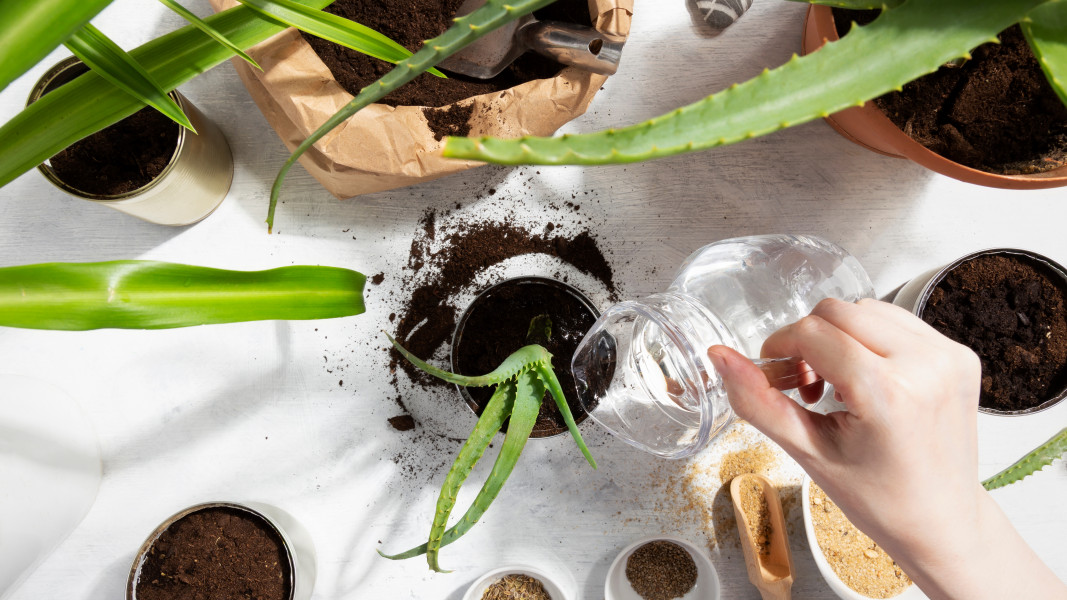Succulents Need Water but not too Much
When it comes to watering, the general rule of thumb is to check the soil before each watering session—if it's slightly moist, then it's time to take a break. During summer months, most succulents should be watered every 7-10 days; slower during winter months. Additionally, make sure that your pot has adequate drainage so that excess moisture can be eliminated quickly—this will help prevent over-watering issues in the future.
It's important to understand each type of succulent may have different needs when it comes to watering. Whether you're just starting out with succulents or have been caring for them for years, understanding how and when to best water them plays an integral role in keeping your plants healthy and beautiful! Always remember—less is more; overwatering can cause serious damage so take care when applying moisture!
How to Know When to Water Succulents?
Knowing when to water your succulents is key to keeping them healthy and beautiful. The best way to determine when it's time for a drink is to check the soil—if it looks dry or slightly moist, then it's time for some H2O! During summer months, most species should be watered every 7-10 days; however, specific succulent types may require different amounts of moisture.
Additionally, there are some visual signs which can indicate that your plant needs water. Wilting or discoloration of the leaves are two telltale warning signs that your succulent requires extra moistening; similarly, too much water will cause sogginess that leads to yellowing leaves or rotting tissue.
For optimal care and growth, you should also provide adequate drainage so that excess moisture can be eliminated quickly—this helps avoid overwatering issues in the future. Once you have an understanding of each species' watering requirements and learn how to read their visual cues, taking care of succulents becomes a breeze! With just enough love and attention each week, you'll soon have thriving houseplants in no time!
What Happens if You Overwater Succulents?
When it comes to overwatering succulents, the key is to act quickly if you notice any signs of overwatering. The following are some common symptoms of an overwatered succulent:
- Soft or mushy leaves
- Dull or transparent foliage
- Brown roots and soil around the root ball
- Root rot (white, gray, or fuzz on the roots)
If you see any of these signs, stop watering your plant immediately and allow its soil to dry out before replanting. It's also important to note that succulents need well-draining soil with plenty of aeration in order to thrive—so be sure to use a potting mix specially formulated for cacti and succulents! Additionally, adjust the frequency of your waterings so that your plant receives only as much water as it needs—it should never stay wet for extended periods of time.
How Often to Water Succulents for the Best Results
For the best results, it's important to water succulents only when the soil is completely dry. This could mean watering your plant every 3-4 weeks in the summer and every 4-6 weeks in the winter. However, this greatly depends on factors such as sunlight, humidity, and temperature—so it may take some experimentation to figure out what works best for your plant. Additionally, make sure that you use a well-draining potting mix to ensure that excess water can drain away from your succulent's roots. With the right balance of sun, water, and soil aeration, your succulent should be healthy and thriving!
Finally, a healthy succulent should have firm, plump leaves that are bright in color. The soil should be slightly moist to the touch and the roots should have plenty of room to grow in the pot. Additionally, a healthy succulent's leaves should be firmly attached to the stem, without any signs of wilting or discoloration. If you give your succulent just enough water (and don't overwater it), it will be happy and healthy! Following the advice above will help you enjoy beautiful and well-grown succulents at home!

